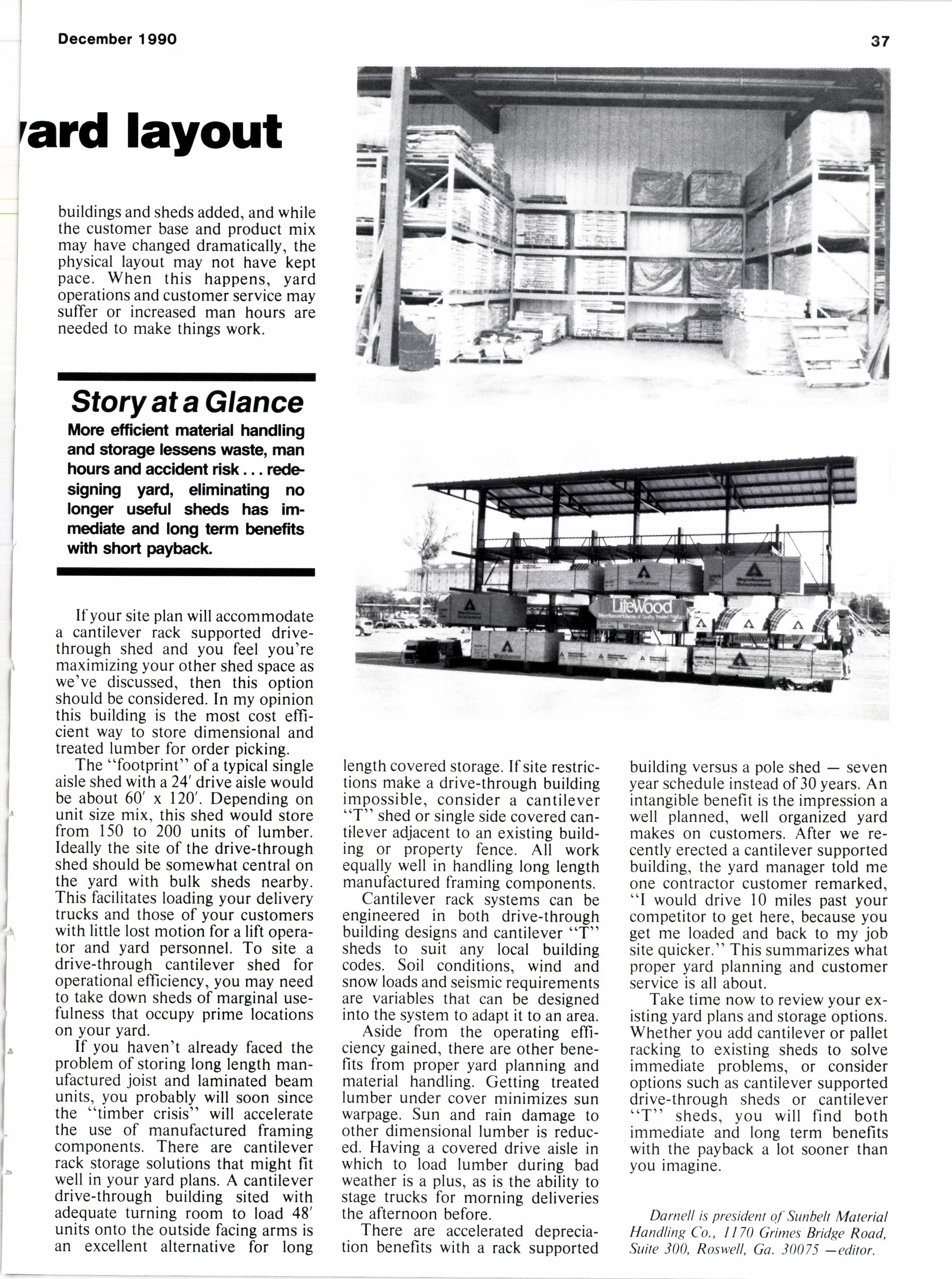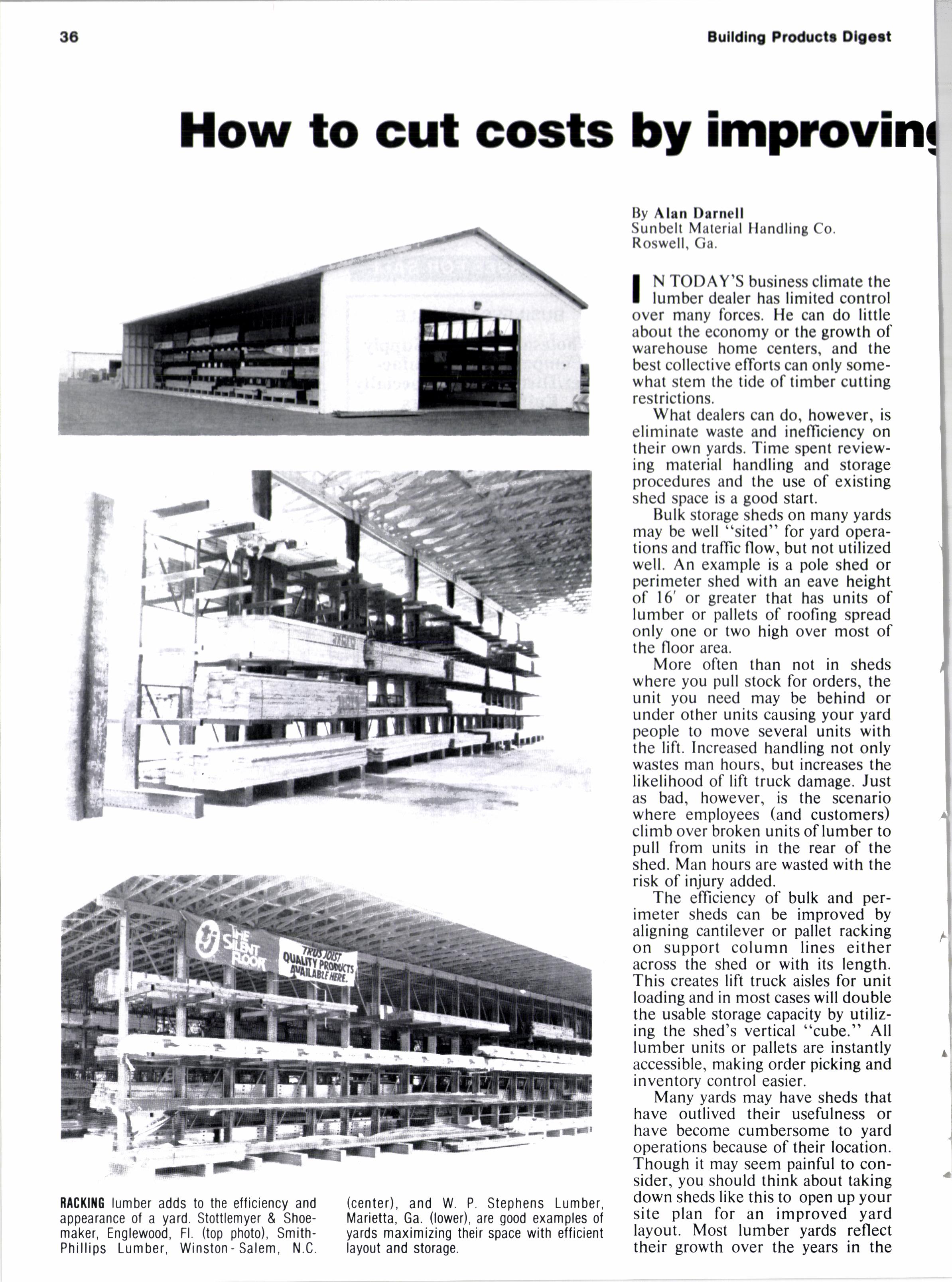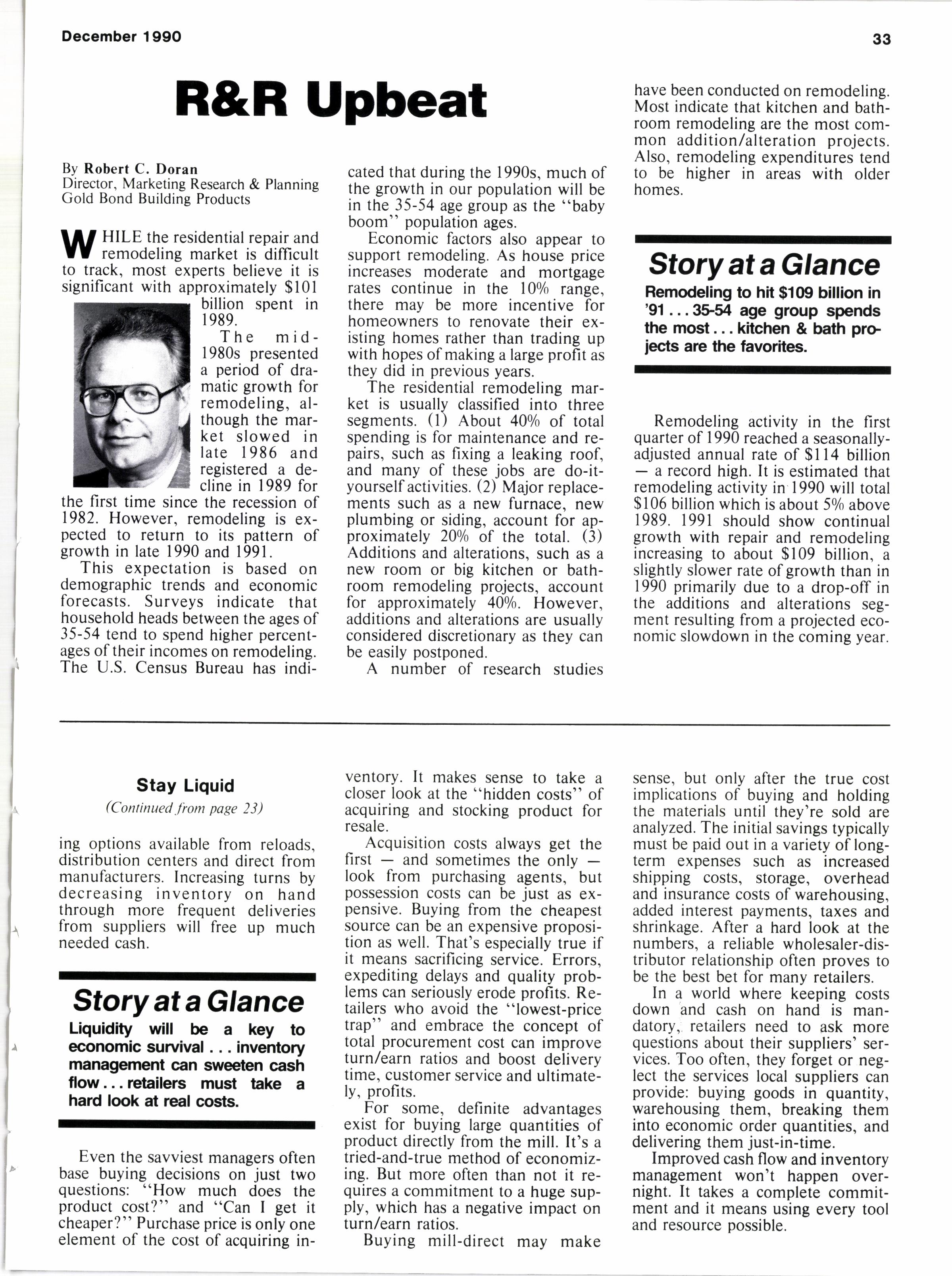
2 minute read
Southern pine stands strong
By Karl W. Lindberg President Southern Forest Products Association
T HE experts say that home- I building is in a depression. the economy is probably in a recession, and the Middle East is so explosive that a shooting war could erupt any day. All of those views constitute bad news for the nation and the southern pine industry in the months ahead.
The good news is that aldo much about housing, the state of the economy or the Persian Gulf crisis, we can and have done something about seeing that southern pine lumber producers can weather such bad news far better than ever before.
What we've done is to deliberately diversify the demand for southern pine lumber products through our Marketing Marathona five-year program that relies less and less on the traditional but diminishing homebuilding sector, while stimulating new demand in such diverse new sectors as exports, engineered wood systems, repair & remodeling, industrial and treated markets.
Through aggressive advertising and public relations, combined with focused promotions to target audiences on the advantages of using southern pine lumber, we have been able to boost demand and pick up the slack of the fading housing sector.
Story at a Glance
Southem pine indusilry is pe pared for the r,\torst. diversified marketing stimulates new demand rcactive stance challenges environmentalist demands.
Example: Housing starts in 1987 fell from 1.8 million units to 1.6 million, but production of southern pine at the mills rose 50/o to 12.47 billion board feet, highest since 1925. In 1988, starts slid to 1.5 million units, but SP production edged up to 12.68 billion board feet. Then last year, starts dipped to 1.38 million units, while SP production slipped only slightly from the year before to 12.55 billion board feet. For 1990, as housing starts plunged to an annual rate just above a million units, SP production through August was ahead of 1989's pace, ready to deliver another l2 billion board feet or more.
Clearly, the southern pine lumber industry is now in a position to ride out the storm if the economic weather grows even worse for homebuilding. And our diversified approach to the southern pine marketplace will also help producers maintain market share even if it turns out that the nation's long expansion has come to an end with an official recession.
In addition to economic woes and possibly a war in the Middle East, the southern pine industry will also face stepped up challenges on the timber supply front.
Preservationists simply do not want anyone to cut down trees. Period. Their thinking is so compartmentalized that they are unable to make the connection between the need for wood products such as lumber, plywood and paper and the need to harvest timber to make those products. Instead, they use owls, woodpeckers, wetlands, yew trees, wilderness and a kind of ancient forest mysticism as legal padlocks to prevent the harvesting of timber from public and private lands.
Slowly but surely, the forest industry is changing from its reactive, defensive posture to a proactive, aggressive stance in putting forth its case to the public. The sooner we can convince the public that we are responsible environmental stewards of the landi the better.










